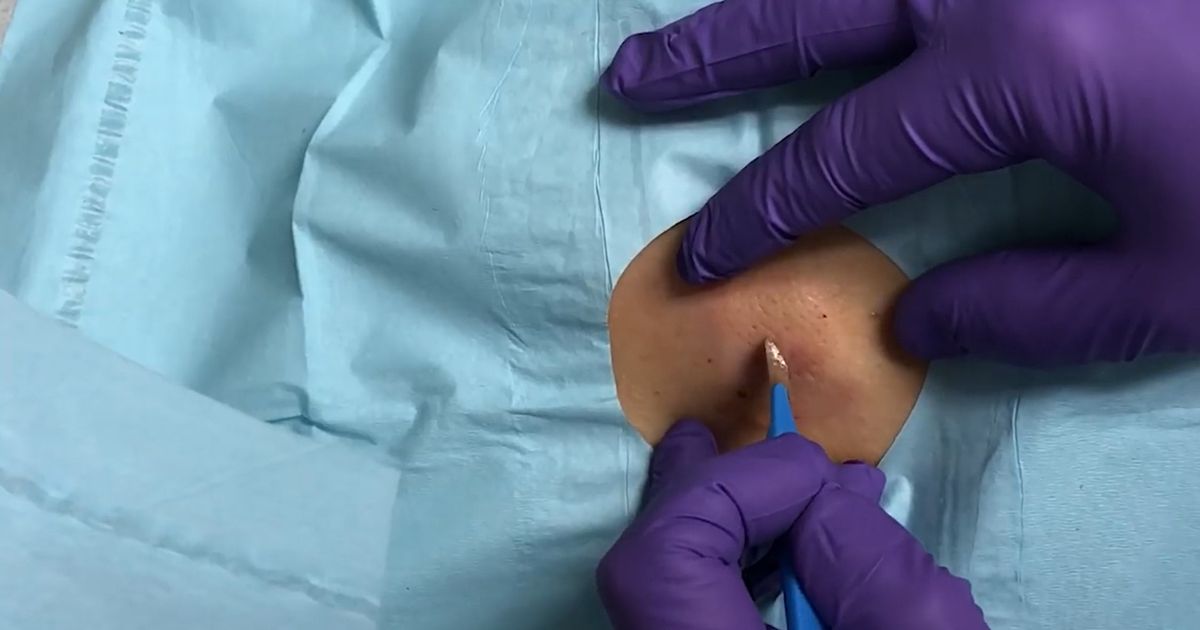Guide To Preventing And Treating A Pilonidal Cyst
A pilonidal cyst is a type of abnormal skin growth generally located at the top of the buttocks but may develop between fingers or other creases along the skin. A pilonidal cyst typically starts out looking like a small, reddened bump that does not go away. It is frequently caused by ingrown hairs or other irritation to the skin, and it can be quite unpleasant if untreated. The main danger with pilonidal cysts is they may get infected and turn into an abscess that eats away at surrounding skin. If this happens, the area can be painful, drain blood, ooze puss, or develop a foul smell.Get familiar with how to treating pilonidal cysts and prevent recurrences now.
The Cyst Draining Procedure

A cyst occurs when a sac-like membrane under the skin grows and begins to collect liquid. Because the liquid and the hair that caused the irritation in the first place is encapsulated inside a sac, it does not heal on its own like a pimple. Instead, treatment for a pilonidal cyst must involve emptying the sac of trapped liquid. In most cases, the preferred method for managing a pilonidal cyst is an incision and drainage treatment. The cyst draining procedure is fairly quick and easy. The doctor numbs the area around the cyst and cuts the cyst. After draining the liquid, the doctor will remove any ingrown hairs or follicles causing the cyst to form. The space is then packed with gauze to leave it open. Over the course of a few weeks, the cyst will continue to drain and heal on its own. Depending on the size, a small scar may be left behind.
Keep reading for more on treating a pilonidal cyst now.
Surgical Removal Of The Cyst

If simply draining the pilonidal cyst does not work, patients may need to consider seeking surgical removal instead. There are a few different methods for surgical cyst removal. A common one is marsupialization, which involves draining the pilonidal cyst and then sewing the edges of the cut to create a small drainage hole that remains open. This can reduce the recurrence of pilonidal cysts and keeps patients from needing to switch out gauze packing each day until it heals. In cases where the pilonidal cyst has turned into an abscess, patients may require a more intense surgery to cut away any infected or damaged skin around the cyst. This removes all dead tissue and leaves behind healthy skin to heal properly.
Patients with recurring cysts may need pilonidal cystectomy surgery, which involves anesthesia that puts the patient to sleep before the doctor removes all the tissue and hair follicles surrounding the cyst. It leaves a bigger scar in the area, but it does greatly reduce the chances of the pilonidal cyst coming back.
Read about the next option for treating pilonidal cysts now.
Take Regular Sitz Baths

Though draining or surgery is the only way to actually get rid of a pilonidal cyst, there are some things patients can do to reduce pain and swelling until their medical procedure is scheduled. A sitz bath is a common pilonidal cyst home remedy. This is a type of bath where an individual soaks the affected area in warm water. Individuals can get a small, round basin just for sitz baths, or they can simply use the bathtub. Soaking in plain water can greatly ease pilonidal cyst symptoms, but individuals can also add salt or baking soda to the water if desired. This can increase soothing and have mild antibacterial effects. If an individual plans on taking regular sitz baths, they should be sure to gently pat the area dry afterward. Avoid rubbing it, as this may further worsen the cyst.
Continue to reveal another way to treat a current pilonidal cyst and prevent another one.
Avoid Clothing That Chafes

Clothing can both affect the outcome of a pilonidal cyst and increase an individual's chances of getting another one. Patients with a pilonidal cyst must avoid clothing that chafes because any added pressure or friction on the cyst can make it hurt and cause abscesses. Individuals who do not have a pilonidal cyst yet should still avoid wearing overly tight and constrictive clothing too often. This includes both stiffer tight clothing like jeans and stretchy tight clothing like yoga pants. The problem with tight clothing is they press hairs against the skin, increasing the risk of ingrown hairs that may turn into a cyst. Good options for clothing to wear when concerned about pilonidal cysts include high waisted skirts, loosely fitting shorts, and wide legged pants. Look for items made with breathable and moisture wicking fibers, as this will avoid trapping sweat and dampness against the skin.
Get the details on more methods of treating and preventing pilonidal cysts now.
Avoid Sitting For Long Periods

One of the most common causes of pilonidal cysts is repeated pressure on the sacral region, which is the area right above the cleft in the buttocks. Individuals who spend a lot of time sitting are far more likely to develop pilonidal cysts because of the constant pressing on the area. Thus, individuals should try to stand up and move around for a few minutes every hour. This helps distribute weight more evenly and prevent the constant pressure from causing a cyst. The ability to avoid sitting for long periods may not be possible in jobs like truck driving. Individuals in these situations should be sure to maintain a healthy weight so they do not put excessive pressure on the area. They should also try to shift around frequently and put their weight on different parts of their butt. This ensures they are not constantly placing pressure on the part of the tailbone where pilonidal cysts develop.
